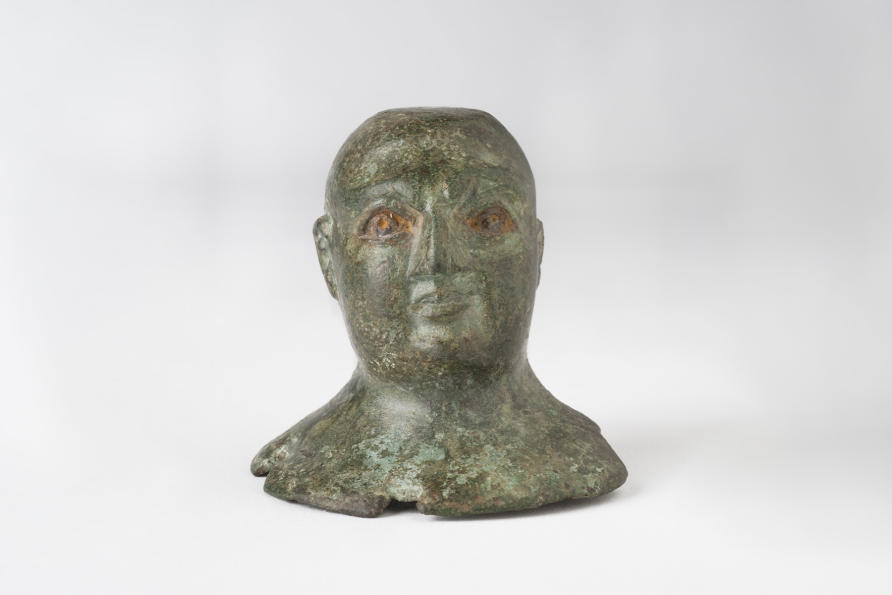고대 세계의 아름다움, 와인, 죽음
새로운 전시회는 고대 그리스-로마 세계의 여성, 어린이, 노예 및 장인의 숨겨진 삶에 대한 통찰력을 제공합니다.
작성자: 멜버른 대학의 Tamara Lewit 박사와 Caroline Tully 박사
고도로 광택이 나는 놋쇠로 만든 작은 거울 속에서 자신의 얼굴을 응시하고 있는 여성을 상상해 보십시오. 그녀는 자신의 몸 전체를 본 적이 없습니다. 그리스와 로마 세계에서 그렇게 큰 거울은 없습니다.
그녀는 분필 가루로 얼굴을 하얗게 하고, 꼭두서니에서 만든 염료로 뺨을 붉게 만듭니다. 그녀의 손가락은 말 머리 모양의 환상적인 바다 괴물로 장식된 둥근 접시에 담겨 있습니다.
우리는 그러한 고대인의 작업실, 침실, 병실이나 역사 기록에서 거의 흔적을 남기지 않고 종종 무시되는 여성, 어린이, 노예 또는 장인의 숨겨진 일상을 좀처럼 엿볼 수 없습니다.
고대의 삶: 고전 및 고고학 컬렉션의 통찰(Insights from the Classics and Archaeology Collection)은 멜버른 대학 올드 쿼드(University of Melbourne) 올드 쿼드(Old Quad)의 Ian Potter Museum of Art에서 개발한 새로운 2부작 전시회로 고대 생활에 대한 보기 드문 창을 제공합니다.
바다 괴물 요리는 전시회의 한 부분인 Amor et Mors: 삶과 죽음의 아름다운 몸을 위한 그릇에 등장하는 많은 작고 개인적인 물건 중 하나입니다.
아마도 거울 앞에 있는 여자는 분필과 염료 대신에 유독한 백연과 진홍색(황화수은)을 사용하여 자신의 아름다움을 더 아름답게 만들고 있는 것 같습니다.
로마의 시인 오비디우스(Ovid)는 으깬 리비아 보리, 쓴 살갈퀴, 계란, 수사슴 첫 뿔을 수선화 구근과 꿀과 섞어서 "이 치료법을 얼굴에 바르는 여성은 자신의 얼굴보다 더 부드럽게 빛날 것"이라고 제안했습니다. 거울".
이러한 혼합물은 뚜껑이 있는 작은 원통형 또는 볼록한 상자인 픽시스(pyxis)에 저장되었을 것이며, 스핑크스와 사자와 같은 동물로 장식되고 점, 사각형 및 구불구불한 무늬로 장식되었을 것입니다.
사람들은 아름답게 보이기를 원했을 뿐만 아니라 신성한 냄새도 맡고 싶어했습니다. 한 남자가 미니어처 유리병에 담긴 카다몬 향수와 향이 나는 헤어 오일을 자신에게 바르곤 했습니다. 어쩌면 장인이 숨결을 불어넣어 모양을 만든 새로운 유형의 병일 수도 있습니다.
불어 유리는 기원전 1세기에 근동에서 발명되었으며(예루살렘에서 발견된 최초의 증거) 이 지역의 장인과 노예에 의해 로마로 옮겨졌습니다.
고대 향수는 올리브, 아몬드 또는 참기름에 향기로운 장미, 고수 또는 야생 백리향을 섞어서 만들어졌습니다. 가장 비싼 향수에는 멀리 아라비아와 인도에서 가져온 이국적인 유향, 몰약, 계피 또는 계피가 포함되어 있었습니다. 인도 파출리는 최근 스페인의 고대 향수병에서 발견되었습니다.
향수와 아름다움은 산 사람뿐만 아니라 죽은 사람도 위한 것이었습니다. 향유와 연고는 시체를 아름답게 하는 데 사용되었으며 무덤에 바쳐졌습니다.
포도주는 장례식 중에 죽은 자에게 주거나 죽은 자의 생일에 구멍이나 관을 통해 무덤에 부어 넣는 또 다른 중요한 제물이었습니다.
전시회의 두 번째 부분인 흰색, 황갈색, 붉은색, 검은색: 그리스와 로마 세계의 와인에서는 신에게 바치는 포도주가 어떻게 종교의 필수적인 부분이었는지, 매일 그리고 특별한 경우에 가정의 신사에 부어졌는지 탐구합니다. 예를 들어 여행에서 돌아오는 것.
전시회에 있는 동전은 이러한 의식을 수행하는 신과 황제를 보여 주며, 이 의식은 가장 겸손한 어부, 어린 소녀 또는 농장 가정부도 수행했습니다.
와인은 의학에서 광범위하게 사용되었습니다. 로마의 가정 요법 핸드북에서는 아픈 편도선에 대해 갈은 비둘기 똥이나 으깬 노래기를 와인에 가글하는 것을 권장합니다.
민트, 회향, 쑥(현대 압생트의 주성분)으로 만든 허브 와인은 기침과 배탈을 비롯한 질병을 치료하는 데 사용되었습니다.
한 그리스 논문에서는 말의 최음제로서 잘게 썬 도마뱀을 포도주에 섞어 주사하는 것을 권장하기도 합니다.
하지만 와인은 모든 사람, 심지어 어린이에게도 보편적인 식단의 일부였습니다. 의학 저술가들은 아기에게 달콤한 포도주에 담근 빵을 사용하여 젖을 떼도록 권장했습니다. 냉장 보관하지 않으면 우유가 쉽게 상할 수 있기 때문입니다.
Dr Caroline Tully and Dr Tamara Lewit Picture a woman gazing at her face in a small mirror of highly polished brass. She has never seen her whole body – no mirror is that large in the Greek and Roman worlds. She whitens her face with powdered chalk and reddens her cheeks with a dye made from the madder plant. Her fingers dip into a round dish decorated with a fanciful horse-headed sea monster. We can seldom glimpse the workrooms, bedrooms and sickrooms of such ancient people or the hidden everyday lives of women, children, slaves or artisans who have left little trace and are often ignored in the writing of history. Ancient Lives: Insights from the Classics and Archaeology Collection, a new two-part exhibition developed by the Ian Potter Museum of Art at the University of Melbourne’s Old Quad, gives a rare window into these lives. The sea-monster dish is one of the many tiny, personal objects featured in one part of the exhibition: Amor et Mors: Vessels for the Beautiful Body in Life and Death. Instead of chalk and dye, perhaps the woman at the mirror is using poisonous white lead and scarlet cinnabar (mercury sulphide) in her efforts to enhance her beauty. The Roman poet Ovid suggests a mixture of crushed Libyan barley, bitter vetch, eggs and the first horns of a stag, mixed with narcissus bulbs and honey, so that “any woman who applies this treatment to her face will gleam more smoothly than her own mirror”. Such a mixture would have been stored in a pyxis, a small cylindrical or convex box with a lid, decorated with animals like sphinxes and lions and patterned with spots, squares and squiggles. People not only wanted to look beautiful but also to smell divine. A man would anoint himself with cardamon perfume and scented hair oil from a miniature glass bottle – perhaps a new type of bottle, shaped by artisans with their breath. Blown glass was invented in the Near East in the first century BCE (the earliest evidence having been found in Jerusalem) and was brought to Rome by artisans and slaves from the region. Ancient perfumes were made using olive, almond or sesame oil mixed with fragrant rose, coriander or wild thyme. The most expensive perfumes contained exotic frankincense, myrrh, cinnamon or cassia, brought from as far as Arabia and India. Indian patchouli was recently discovered in an ancient perfume bottle in Spain. Perfume and beauty were not only for the living but also for the dead. Fragrant oils and unguents were used to beautify the corpse and were offered at the grave. Wine was another important offering, given to the dead during funerals or poured into the tomb through holes or tubes on the birthdays of the deceased. The second part of our exhibition, White, Tawny, Blood-red, Black: Wine in the Greek and Roman Worlds, explores how wine offerings to the gods were also an essential part of religion, poured at household shrines every day and on special occasions such as returning from a journey. Coins in the exhibition show deities and emperors performing these rites, which were also carried out by the humblest fishermen, young girls or farm housekeepers. Wine was used extensively in medicine. A Roman handbook of home remedies recommends gargling ground pigeon dung or crushed millipedes in wine for sore tonsils. Herbal wines made with mint, fennel and wormwood (the main ingredient of modern absinthe) were used to cure ailments including coughs and stomach upsets. One Greek treatise even recommends an injection of wine mixed with chopped up lizard as a horse aphrodisiac. But wine was also a universal part of the diet for everyone – even children. Medical writers recommended that babies be weaned using bread softened in sweet wine, since without refrigeration milk would easily spoil. Wine was always drunk diluted with at least three or four parts of water, except for religious rituals. Drinking water was often contaminated and was safer when mixed with wine, the acidic and alcohol content killing pathogens. Sour wine, which was virtually vinegar, was distributed as rations to Roman soldiers but would be considered undrinkable today, and slaves drank wine-like drinks made from the skins and pips of grapes soaked in water. Athletes were advised to drink wine only moderately. Wine is frequently referred to in the Christian Gospels, and the wine cup Jesus used at the ‘Last Supper’ came to be called the Holy Grail. According to medieval poetry and legend, it was also used to collect his blood and was much sought by the crusaders as a holy relic. Early Christian devotion is represented in the exhibition by a Tunisian plate fragment stamped with the image of a woolly lamb (a common early Christian symbol). Who stamped it and why? Was the artisan expressing piety or cleverly taking advantage of demand from adherents of this new religion? Perhaps its users felt protected by this sacred symbol as they reclined to dine, reaching into the communal dish of food with their fingers, as was the custom. Cups and jugs, gold coins and terracotta statuettes, a marble cupid, a bronze wrestler, glass bottles and cosmetic pots speak to us with the voices of ancient people about their intimate lives. The exhibition Ancient Lives: Insights from the Classics and Archaeology Collection is jointly curated by Dr Caroline Tully and Dr Tamara Lewit, and presents about 100 objects from the University of Melbourne Classics and Archaeology Collection. The exhibition forms part of the Ian Potter Museum of Art’s artistic program and is presented at the Old Quad while the Potter is undergoing transformation of its entrance and teaching spaces. It is open at the Old Quad, the University of Melbourne, Parkville, from 24 July 2023 – 17 May 2024, Monday to Friday 10-5. Entry is free. There are free Open Day curators’ talks at 11.30am on Sunday 20 August 2023. Banner: The serene face of a dead woman, lips tinted pink and eyes outlined with kohl, gazes at us from this mummy mask. Installation view, Ancient Lives, Old Quad, 2023. Courtesy of Museums and Collections Department, the University of Melbourne. Photo: Christian Capurro.Beauty, wine and death in the ancient world
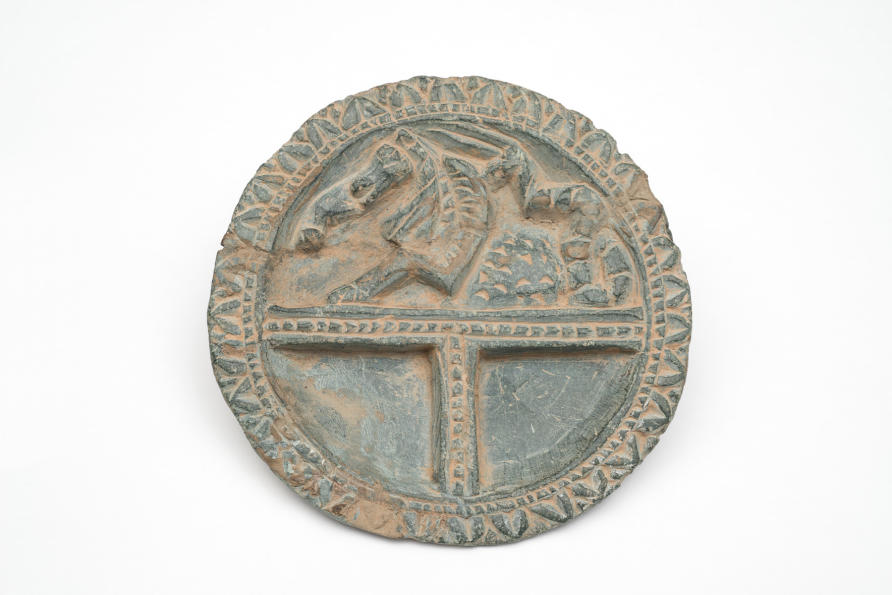
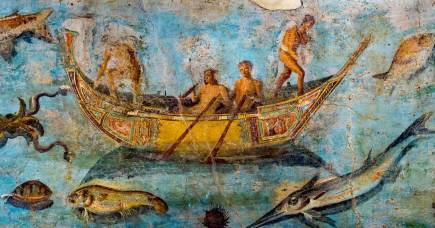
All rivers lead to Rome
LIFE, DEATH AND BEAUTY
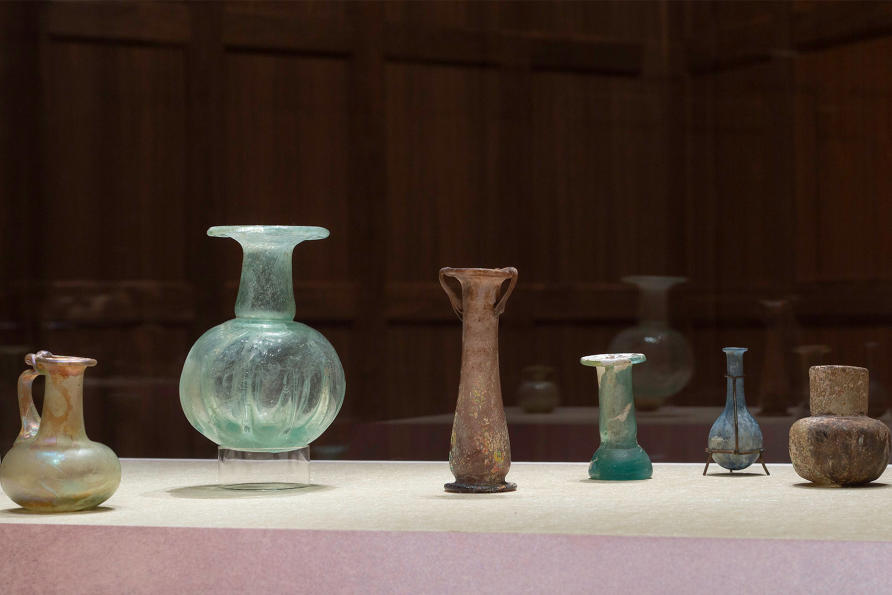
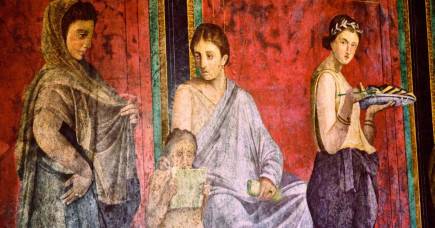
Happy ancient Roman Mother's Day
WINE FOR THE LIVING AND THE DEAD – AND BABIES
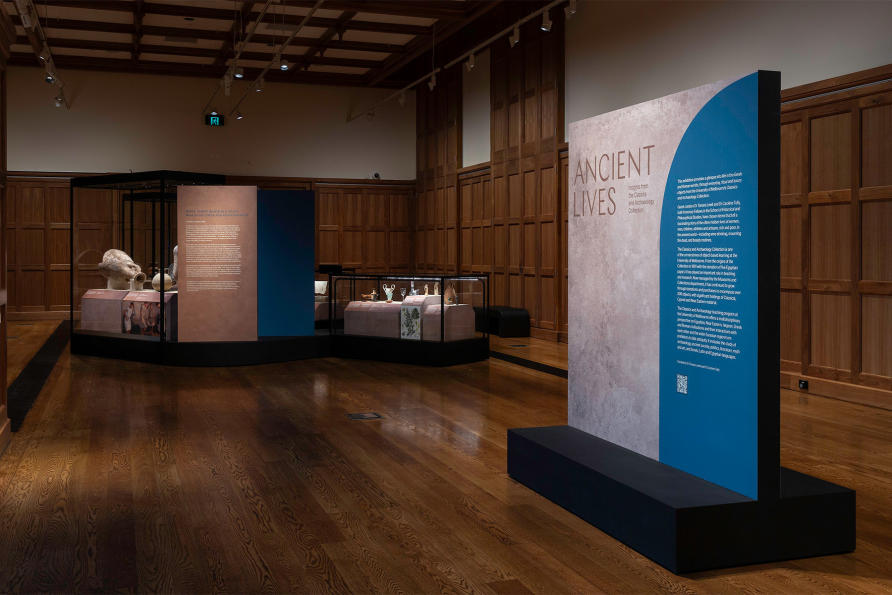
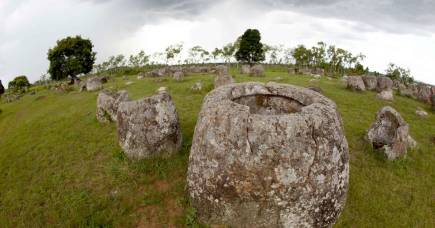
Laos jars are slowly revealing their secrets
